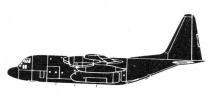Incident Overview

Description
Flight ROT 335 had been cleared to land on runway 26 at Stockholm-Arlanda airport. The pilots had visual contact with the field and the landing was performed according to visual flying rules (VFR). The approach was normal with occasional turbulence and wind gusts from the south. When the aircraft was on 8nm final, air-traffic control reported the wind 160ø/13 knots. To begin with the aircraft was somewhat above the glide slope but was on the glide slope when it passed the threshold. The touchdown on the runway was in the normal touchdown zone on the left main gear and nose up. Shortly thereafter came a strong wind gust whereupon the right main gear touched down and the nose gear heavily hit the runway. The commander controlled the aircraft with rudder, reversed the engines and braked lightly. He did not notice anything special in the behavior of the aircraft at that point. When – after the speed had become so low that rudder steering was no longer possible – he reverted to nose wheel steering he noticed that it was not functioning. He continued the light wheel braking but could not prevent the aircraft from veering to the right. He then braked fully but the aircraft continued towards the right runway edge. It left the runway at a speed of around 60 knots out onto the grass field. The retardation was soft and the passengers disembarked through ordinary exit. The aircraft sustained substantial damage and the hulk was moved to Halmstad by Le Caravelle Club as fire trainer. PROBABLE CAUSE: “The accident was caused by the collapse of the nose gear as a result of overload when the aircraft touched down with its nose wheel first after two bounces. A contributing factor was shortcomings in cockpits CRM (Cockpit Resource Management) during the flight.”
Primary Cause
Overload leading to nose gear collapse during touchdown.Overload leading to nose gear collapse during touchdown.Share on:





